The Maasai of East Africa, famous for upholding a culture as rich and vibrant as the ornaments they wear, live in southern Kenya and northern Tanzania along the Great Rift Valley.
The Maasai (or Masai) are an indigenous tribe of warriors, who in spite of modernization have preserved their old customs of a semi-nomadic lifestyle.

The Maasai population is estimated at about 842,000 (2009 Kenya census). The Maasai Association reports that obtaining an accurate Maasai count has been challenging for census officials due to the people either providing false information or their refusal to participate in censuses which is considered “government meddling”.
Maasai are traditionally pastoralist. They often live in small camps, frequently moving their cattle herds from one place to another in search of water and greener pastures for their livestock.
Although over recent years they have resisted the call of the Tanzanian and Kenyan governments to adopt a more sedentary lifestyle, Maasai are now forced to do so due to zoning and trespassing laws.
Companions and Best Friends
Cows are central to Maasai life and economy. In the old days, the Maasai were known to live for their cattle alone. They fundamentally believe themselves to be the owners of all cattle.
According to popular folklore, “The Maa speaking peoples of East Africa [to which the Maasai belong] believe that at the beginning sky and earth were one, and the Maasai did not have any cattle. God (Enkai) then let cattle descend from the sky along a bark rope, and the Maasai received all cattle that currently exist in the world. The Dorobo (Ildorobo people), a group of hunters and gatherers, did not receive any cattle, and therefore proceeded to cut the rope, producing a separation between heaven and earth, and stopping the flow of cattle from God. From that belief, it follows that there is a direct link between God and cattle, and that all cattle in the world belong to the Maasai.” – OurDems.org
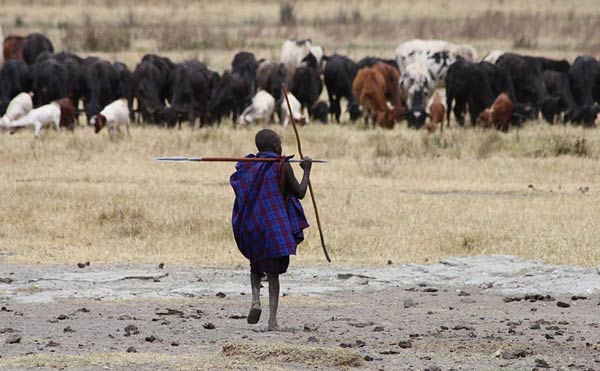
The Maasai accumulate cattle as a symbol of wealth. A rich Maasai man is one who owns more than one thousand cows; those with less than 20, are considered poor.
Cows are traded in exchange for other foods or sold to settle debts, and expensed as dowry for new wives.
The life of Maasai people revolve around their cattle – they are known to drink cow’s milk and blood as sacred drinks; cow dung is used to cover and seal their homes constructed of grass, tree branches and mud; if a cow is killed, its horns are used as containers, its hide to make shoes, clothing, ropes, and bed coverings, and hooves and bones are turned into ornaments. Cows are never slaughtered for food.
Cows are named and owners recognize their animals’ individual voices.
Maasai men
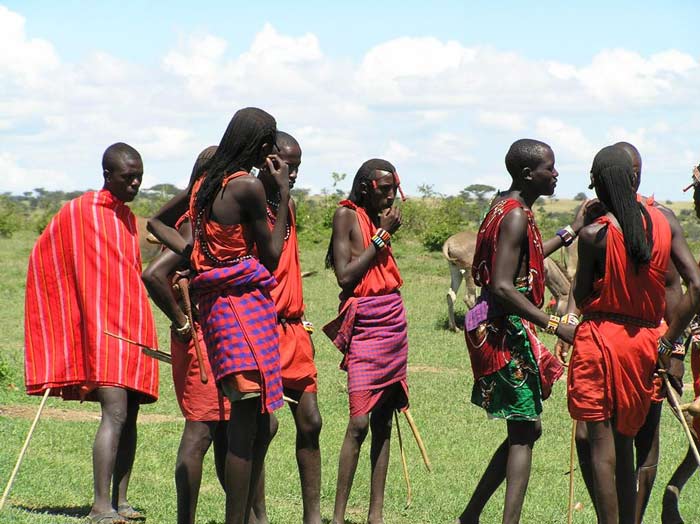
Maasai men wear red checked shuka known as the Maasai blanket.
Young boys typically wear their hair in long braids dyed with red clay.
Maasai communities are organized into male age-groups. Members of similar age groups progress together through initiations from boys who become warriors, and then elders.
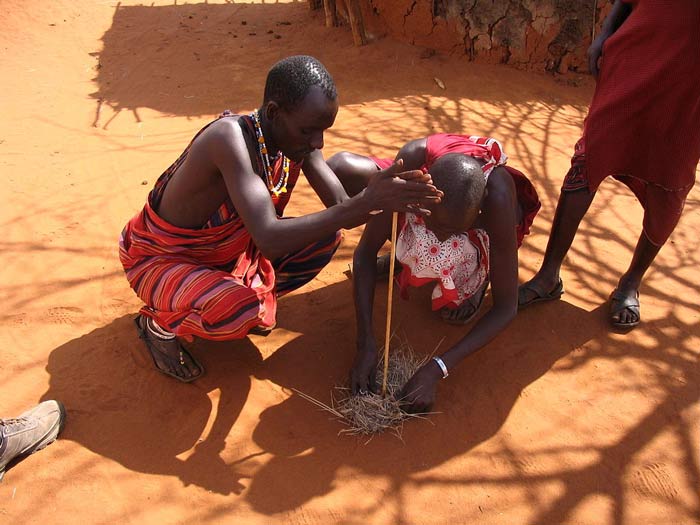
Young boys are responsible for tending to herds, while young men/warriors (each proudly seen carrying a spear and distinctive ball-ended club) guard their communities against intruders.
Elders control day to day life in the community.
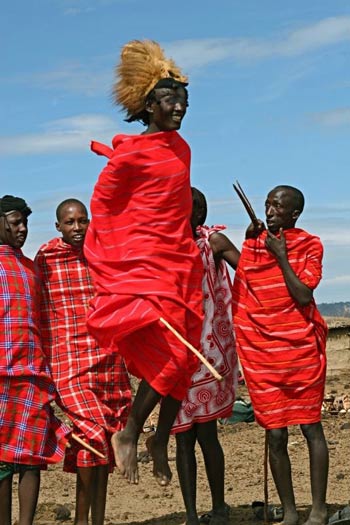
Maasai Women
Maasai people are highly acclaimed for beautiful bead work and handcrafted ornaments made by their women. Beading patterns and colors carry a cultural significance related to gender, age group, marital status, etc.
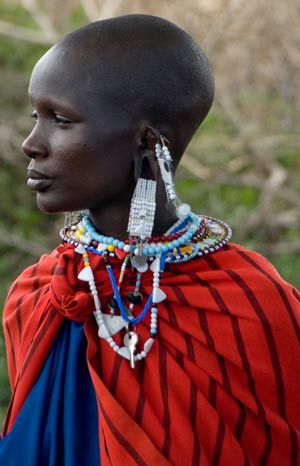
Maasai women are mainly homemakers, involved in constructing homes and become dedicated to upkeep of their homes. The duties of a Maasai woman include fetching water, preparing meals and milking cows. The women also make clothing, necklaces, dresses, and head-dresses out of beads.
Women and children keep their heads shaved. The women often wear vast plate-like bead necklaces and bangles. Masai wear large hoops on pierced ears.
As far as relations between Maasai males and females, the code is best described by University of Iowa Data On The Maasai as follows: “When a young woman reaches puberty she is usually married immediately to an older man inorder to prevent the birth of children out of wedlock. Until this time, however, she may live and have sex with the youthful warriors. Often women maintain close ties, both social and sexual, with their former boyfriends, even after they are married. In order for men to marry they must first acquire wealth, a process that takes time. All children, whether legitimate are not, are recognized as the property of the woman’s husband and his family.”
Maasai Healers
The Laibon – healers in the land – dispense herbal remedies for treatment of physical ailments. The Laibon also serve as Maasai diviners who are consulted in times of misfortune. Ritual treatments performed by Laibon are believed to absolve social and moral transgressions.
In recent years Maasai Laibon have earned a reputation as the best healers in Tanzania. Even as western biomedicine gains ground, people continue to search out Maasai traditional remedies. Laibons can sometimes be found peddling their knowledge and herbs in the urban centers of Tanzania and Kenya.
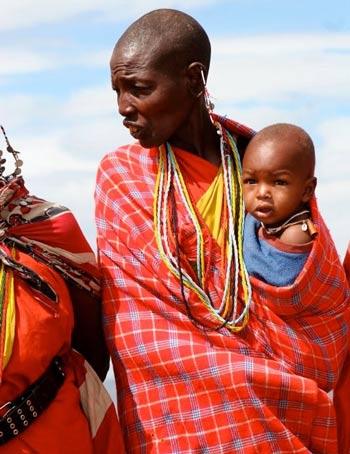
Historically, Maasai people did not cultivate their land; however, changes in recent times have forced them to settle and take on farming as part of their lifestyle.
Maasai highly value their history. Beauty is important to them. The values they uphold have earned them worldwide respect, and the Maasai lifestyle serves as a huge touristic attraction to their villages, where visitors receive a warm welcome.
The Maasai are proud flag bearers of an independent, proud and courageous group of Africans.
DUNIA Poll (vote and see how others are voting)
![]() Loading ...
Loading ...
